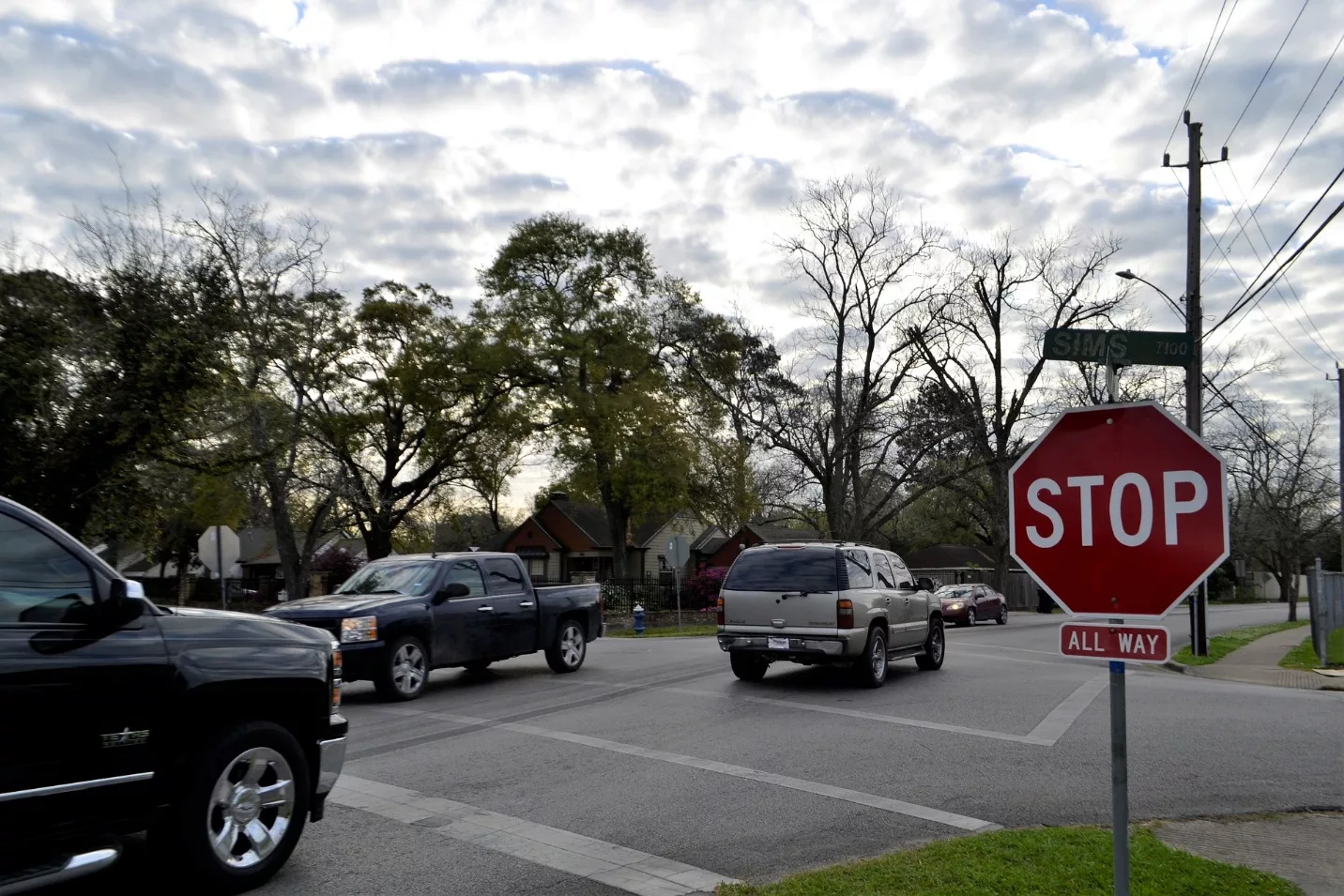It can be unsettling when a motorist drives too close behind your vehicle. However, you must resist the urge to slam the brakes or speed up to evade them. There are numerous sensible ways to handle such drivers and safely move out of their way.
Your response to a tailgater can also aggravate the situation further. A calm response can de-escalate it and avoid a collision. Remember, if a tailgater hits you, they are considered at fault for the accident, and you can file a claim against their insurance for damages or injuries.
Tailgating is when drivers do not maintain the recommended safe distance between cars. The National Highway Traffic Safety Administration recommends a distance of at least 3-4 seconds between cars.
This practice is dangerous and can happen for various reasons. For instance, some drivers tailgate out of habit, while others may be inexperienced or drowsy behind the wheel leading to careless driving. Whatever the reason, tailgaters put themselves and other motorists at risk.
Tailgating is considered aggressive driving. The NHTSA defines aggressive driving as a motorist committing a combination of moving traffic violations that endanger other road users or property.
How To Safely Handle Tailgaters
So, how can you handle a tailgater safely? Here are some tips to get you started.
Remain Calm
You may feel upset, nervous, panicked, or angry when you first notice a tailgater. However, you must remain calm and put your emotions aside. Take a few deep breaths as you assess the situation.
When calm, you remain in control of your car and are less likely to cause an accident.
Consider turning off the radio if it will help you concentrate on your driving. Pay close attention to how you drive as you carefully move away from the tailgater.
Pull Over or Move Out of The Way
Switch lanes and allow the tailgater to pass if you are driving on a multi-lane highway. If driving on a one-lane road, consider safely pulling over to allow the other driver to pass. Get back on the road when you feel safe.
Remember to signal your intent to pull over or switch lanes. If you are pulled over, keep your signal on until you can return to the road. Consider pulling into a parking area if there is one available.
Maintain a Constant Speed
Sometimes tailgaters are stuck behind your vehicle because your speed is not consistent. They may not feel safe to overtake.
Keeping your speed constant allows tailgaters to assess your speed and determine when it is best to overtake. Changing speed abruptly may cause an accident.
Keep to The Right
Staying in the right-hand lane leaves room for other drivers on a multi-lane road and signals to faster drivers on a single-lane road that it is safe to go around you.
If driving in areas with inconsistent passing lanes, keep to the right at a constant speed unless you need to pass other motorists.
Slow Down Where There are Straight Sections
If you are driving on a winding road, look out for straight sections and slow down. You can also move over slightly to signal to the tailgater that it is safe to overtake before you get to the winding sections.
Should the tailgater attempt to overtake an unsafe road section, slow down and keep your distance. They may swerve back unexpectedly into your lane and cause a collision.
Do Not Drive Faster in You Feel Unsafe
Many drivers instinctively speed up to avoid tailgaters by increasing the gap between their cars. However, the tailgater may also speed up closing the gap again. As a result, you drive at an uncomfortable speed while the tailgater is still dangerously close.
Avoid Brake Checking
It is tempting to step on your brakes and warn the tailgater to back off. However, it is unlikely to work if the tailgater is driving too close because they are not paying attention.
The tailgater may also panic on seeing your brake lights and step on their brakes, causing a multi-vehicle accident behind them.
If the driver is aggressive, they can take offense and drive even closer. Resist the urge to use your brakes to lower the chances of getting into a crash.
Follow a Truck
Follow a truck at a safe distance as they are big enough for other drivers to spot from a distance. This ensures drivers prepare to overtake the truck, making them unlikely to tailgate your car. Trucks also travel slower, so driving behind them gives you time to recover your composure.
Use Cruise Control
Some motorists do not realize when they are changing speed inconsistently or driving under the speed limit. Cruise control can help you regulate your speed and make it easier for other drivers to pass you.
We recommend using cruise control on the highway to make it easier for other road users to make safer decisions when deciding whether to pass your car.
What Not to Do to Tailgaters
Here are a few things that you shouldn’t do when you notice someone tailgating you. This is for your own safety.
Do Not Overuse Your Brakes
Do not attempt brake-checking or hitting the brakes when you notice you have a tailgater. Constant braking may cause an aggressive tailgater to ignore you and drive even closer.
On the other hand, an inattentive tailgater may slam their brakes in a panic and get rear-ended. Sometimes, it can cause a chain reaction resulting in a multiple-car collision.
Remember to keep calm, slow down, and allow the tailgater to pass your vehicle.
Do Not Attempt to Police the Road
If you are driving at the recommended speed limit but a tailgater seems in a hurry to go faster, allow them to pass. It is not your job to prevent them from speeding.
Attempting to slow down a speeding driver by staying in front of them may lead to aggressive driving resulting in an accident.
Steer your vehicle aside and let them pass. If you are genuinely concerned for the safety of other road users, consider pulling over and reporting the unsafe driver to the relevant authorities.
Do Not Become a Tailgater
Stay mindful of your driving to keep yourself and other road users safe. Always keep the recommended 3-4 seconds distance between you and the car in front. This distance allows you to stop safely if needed and gives you enough time to react in an emergency.
How To Avoid Being a Tailgater
- Always pay attention on the road: A glance at your phone can cause you to lose focus and get too close to the car ahead of you. When driving, always stay alert while maintaining a safe distance from other drivers.
- Keep your cool: When driving, keep your anger in check. Do not let a tailgater bother you, as it can result in road rage.
- Do not try to influence other drivers: Some drivers follow too closely to force other motorists into a different lane. If the road is clear, simply pass the motorist or allow impatient drivers to pass you.
What Happens if a Tailgater Rear-ends You?
Rear-end accidents caused by tailgating are one of the top three types of car accidents on American roads. Tailgating can be caused by several reasons, including:
- Impatience
- Driver being distracted.
- Fatigue
- Driving under the influence of drugs or alcohol
- Aggression
- Running late
If a tailgater rear-ends your car, they may be held liable. They have a duty to drive responsibly to keep other road users safe. A tailgater who causes an accident that results in injuries breaks their duty of reasonable care and is liable for damages.
However, the rear-ended driver could also carry partial blame. If there is evidence that you stopped abruptly for no reason, you may be charged with negligence. More insurance companies are contesting seemingly deliberate accidents caused by drivers stopping abruptly.
A motorist who brake-checks the tailgating driver causing them to step on their brakes suddenly is also liable for any resulting accidents. If you are liable for causing the rear-end accident, your collision insurance can cover repairs to your vehicle. If you carry liability insurance, you can help cover the other driver’s injuries and damages.
Summary
If you are involved in a rear-end accident, gather statements from witnesses and contact the police. Take pictures of the crash and ensure you get medical treatment immediately, even if you feel fine.
Provide your medical reports to the insurance company and your lawyer to give them an accurate report of the accident. Your case might not automatically go to court; however, you will need an attorney to ensure a favorable outcome.
Having an attorney ensures you get accurate representation from an experienced professional who can negotiate a favorable settlement with the insurance company.
Tailgating can have serious consequences, including vehicular damage, injuries, and fatalities. If you notice a tailgater, remember to keep calm, and take the actions outlined here to get safely out of the way.
Contact an experienced auto accident attorney to determine liability and get the right representation if you have been rear-ended. If there are extenuating circumstances, your lawyer will also help you determine the right course of action by evaluating your documentation.


